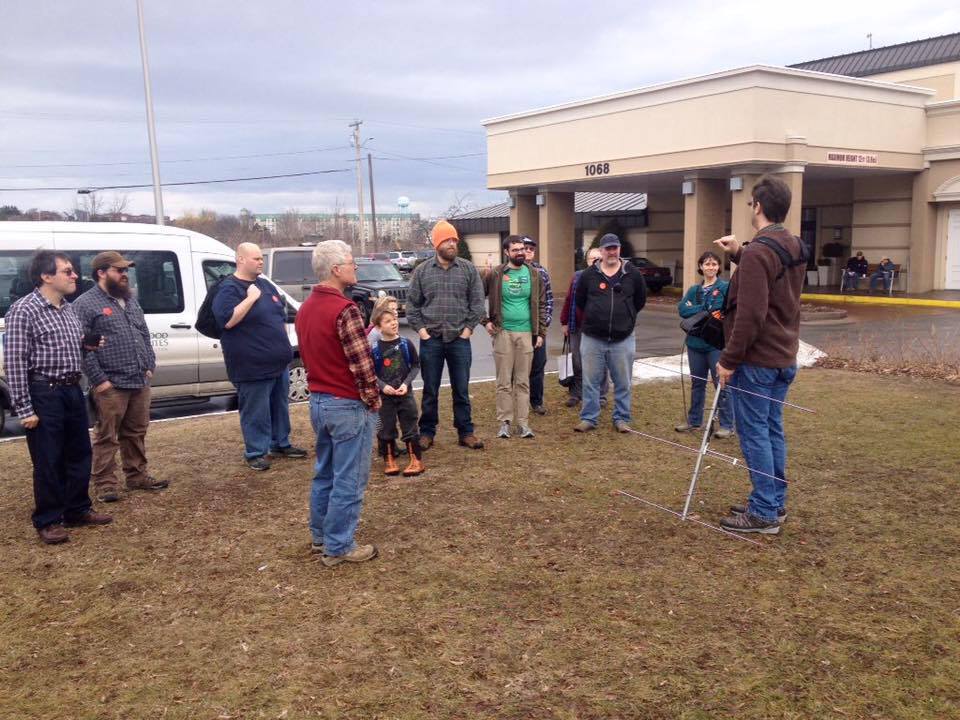Ham radio is fun stuff! We enjoy building circuits, talking around the world without the internet, and developing our skills to be ready in case we’re ever needed for an emergency. So how do we go about telling our story to the public and attracting others to join us? And especially, how do we do that during a global pandemic like we’re currently experiencing?
Being visible in our communities takes time and effort. It requires building relationships with community leaders, local government, and the public. And it demands consistent application of those skills. Here are a few strategies your club can take to promote Ham radio in your area.
- Get a PR volunteer. Pick one person in your club to oversee your outreach efforts. Some clubs have a PR Officer or Communications Officer, which is an elected position. This person should ideally be familiar with the local area and be personable and well-spoken. Familiarity with online tools, such as social media, is a big asset.
If you have enough people in your club, have others serve as communications assistants. They can help create and distribute event flyers, update your club website, and monitor your club’s social media feeds. If you don’t have any presence on social media, they can help promote your club on Facebook, Twitter, Instagram, etc.
- Speak Everywhere. Find places you can make a presentation about Ham radio and your club. These include libraries, church groups, your local Rotary club, local radio, and any kind of public event sponsored by your city. Have a presentation available that explains what Ham radio is, why it’s fun, and how people can get involved. Keep your presentation short; 10 minutes is a good target.
- Appearance Is Credibility. When presenting to your civic leaders or the community at large, make sure you put your best foot forward. Dress appropriately; a polo and some khakis, along with a fresh shave or neatly-trimmed beard, is a good place to start. Avoid the trappings of Ham radio culture, such as hats with your callsign on them or Ham-radio-themed T-shirts. As much as we love and use them to identify ourselves, these mean nothing to the general public. A shirt with your club’s logo is a possible exception. Look professional, be professional.
- Avoid Jargon! We all do it. You start talking about “kerchunking a repeater” or “making DX QSOs” during your presentation. It happens in all areas of work and recreation. Understand your audience: If you’re speaking to the general public, assume they know little to nothing about Ham radio and use simple language to describe what your club does.
- Don’t Go Too Deep into the Weeds. We’ve all been to a presentation or forum where the presenter gets too deep too fast. Don’t be that person!An introductory presentation shouldn’t go into exhaustive detail about what Ham radio is or how it works. Keep your presentation relatively short and focus on broad concepts. You can save those deeper discussions for those in the public who express interest and ask questions after your presentation.
- Make Yourself Available. Make yourself available for questions after your presentation. These may be one-on-one questions after a formal Q & A period. Be sure to collect email addresses for those in attendance who want to learn more. Once you have them, contact them SOON; within a couple weeks at the latest. Don’t make a person who has expressed interest in what you do wait too long to hear from your club.

Making Connections with Local Officials
It’s critical to establish ties with your local government or service agencies. These include your mayor, representatives on your city council or county board, police department, and your local or county emergency operations center. Do you have a Ham in your club who knows a community leader? If so, ask them if they would be willing to help make an introduction.
Before you introduce your club to your local government, try to determine what needs they may have and how you can help. Rather than asking the town for something you need (a site for your local repeater, for example), offer them solutions to problems they are facing. Present yourself as an asset, not a liability. Go to local city council meetings and listen to what is being discussed. Read the local paper or listen to the local talk shows when city officials are being interviewed. Find a way your club’s skill set can help solve a problem, and you will increase your chances of getting a welcoming ear. Play up your strengths, such as SKYWARN training, or the ability to assist with communications during city events such as county fairs or Fourth of July festivities.
Partner with Other Organizations
There are other groups in town you may be able to cooperate with and gain valuable exposure as a result.
- Does your community have a Makerspace, DIY club, or local robotics team? Many of those groups have an interest in microcontroller projects, such as the Raspberry Pi. Collaborate with them and work on a project together; both groups will learn what the other group has to offer. Win-win!
- Do you have an astronomy club in your area? If so, set up a station during one of their “star parties” or observation sessions. If you have an operator in your club with experience in moonbounce, meteor scatter, or satellite operation, it’s a great fit for outreach to a space-oriented club.
- Partner with your local Scouting troop to help Scouts earn badges. ARRL has lots of Ham radio and Scouting resources available here.

Other Ways to Get Noticed
As the saying goes, there’s no such thing as bad publicity. Have your club volunteer for things in your community that have nothing to do with Ham radio. Some of the more ingenious ideas I’ve seen Ham clubs engage in are:
- Volunteering to program weather alert radios for the public before tornado season in the Midwest
- Helping repair or fix minor appliance issues or solve computer issues for the needy
- Manning a phone bank for a telethon or charity event
- Signing up for neighborhood/park cleanup events in your area
- Helping to make sandwiches at a local soup kitchen or food pantry
Use your imagination to find the available opportunities. Demonstrate you’re part of the community by helping the community with needs they have, even if those needs are not communications-related.
Navigating Covid-19
With most public gatherings restricted or completely off-limits due to the coronavirus pandemic, outreach is especially challenging. How do you get people to learn more about Ham radio when you can’t make a presentation in public?
This is where online resources can help fill in the gaps. Be sure to use your Facebook group to reach out to community members. “Friend” and “follow” the pages and feeds of civic and governmental groups. Check out Nextdoor and Meetup [https://www.meetup.com/] as well. Find pages that are tied to your neigborhood; offer simple electronics projects for kids and adults alike during this time of shelter-in-place. Everybody is looking for a good project. Crystal radio sets, tracking commercial aircraft with an SDR, teaching Morse code or basic soldering… all of these projects could be spearheaded by your local club.

Consider doing a Facebook Live session and answer questions about Ham radio. If your club already teaches Ham radio classes, use Facebook Live or an online conferencing platform like Zoom or Skype to teach your classes online. You’ll need a phone or laptop with a webcam built in. Check out these tips for using Facebook Live and how to get the most out of your efforts.
Lastly, be sure to highlight Ham radio as another way for everyone to stay connected and help build community. My local club has started a nightly net on our repeater to help local Hams maintain their sense of community and discuss all sorts of projects to try during the Covid-19 crisis. Use your online presence to teach the general public how they can listen in to your repeater during these nets, and list contact info for those who have questions.
There’s a lot out there vying for people’s attention these days. Promotion is a lot more than setting up a booth and waiting for people to come to you; you have to go to them. And keep your expectations realistic. Not everybody is going to be interested, but some will. Make sure you stay in touch with those who express interest and use the online tools available to all of us during this time of social distancing. Have other Ham radio outreach ideas? Drop me a line [mailto:kx9x@yahoo.com] or share them in the comments field of this blog!


Pingback: Promoting Ham Radio in Your Area - Ham Radio News